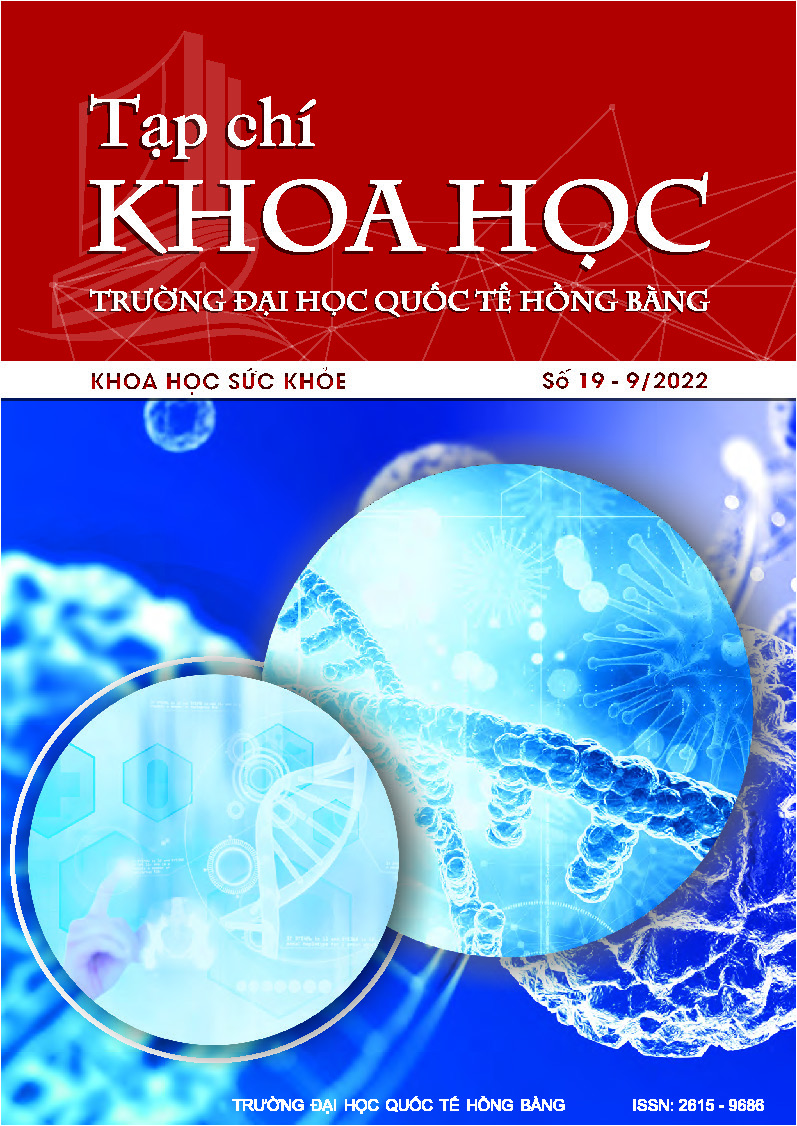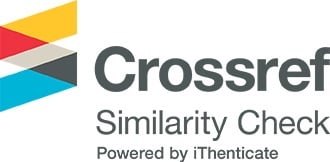Điều trị viêm bằng hệ dẫn thuốc kháng viêm không steroid (NSAIDs) qua da
Các tác giả
Từ khóa:
NSAIDs, TDDS, kháng viêm, phimTóm tắt
Da hoạt động như một hàng rào không thấm nước đối với hầu hết các thuốc phân cực và sự hấp thụ qua da thường chậm và không hoàn toàn để đạt được mục đích điều trị hiệu quả. Tuy nhiên, con đường phân phối thuốc kháng viêm không steroid (NSAIDs) qua da có một số ưu điểm so với các con đường khác như: giảm các tác dụng phụ, ít hấp thu toàn thân và tránh chuyển hóa lần đầu ở gan cũng như phân hủy ở đường tiêu hóa. Con đường thẩm thấu qua da cũng có lợi đối với các thuốc có chỉ số điều trị hẹp. Do đó, việc tạo ra hệ dẫn thuốc qua da (TDDS) là một trong những đổi mới quan trọng nhất. Bài tổng quan hiện tại trình bày các hệ dẫn NSAIDs qua da mới đã được khám phá và những ưu điểm liên quan đến các hệ dẫn thuốc mới này so với các hệ dẫn thuốc thông thường.
Abstract
The skin acts as an impermeable barrier to most polar drug candidates and absorption across the dermal membranes is often too slow and incomplete to produce meaningful therapeutic benefit. However, the transdermal route of delivery of non-steroidal anti-inflammatory drugs (NSAIDs) has several advantages over other routes like reduced adverse effects, less systemic absorption, and avoidance of first-pass effect and degradation in the gastrointestinal tract. The transdermal route is also beneficial for drugs having a narrow therapeutic index. Therefore, the creation of a transdermal drug delivery system (TDDS) has been one of the most important innovations. The present review squares the various novel transdermal drug delivery systems that have been explored for NSAIDs and the advantages associated with these novel drug delivery systems in comparison to conventional drug delivery systems.
Tài liệu tham khảo
[1] W. Badri, K. Miladi, Q. A. Nazari, H. Greige-Gerges, H. Fessi and A. Elaissari, “Encapsulation of NSAIDs for inflammation management: overview, progress, challenges and prospects,” Inter. J. Pharm., vol. 515, pp. 757-773, 2016.
[2] C. J. Hawkey, “COX-1 and COX-2 inhibitors,” Best Prac. Res. Clin. Gastro., vol. 15, pp. 801-820, 2001.
[3] C. Yiyun, M. Na, X. Tongwen, F. Rongqiang, W. Xueyuan, W. Xiaomin and W. Longping, “Transdermal delivery of nonsteroidal anti‐inflammatory drugs mediated by polyamidoamine (PAMAM) dendrimers,” J. Pharm. Scien., vol. 96, pp. 595-602, 2007.
[4] J. S. Boateng, H. V. Pawar and J. Tetteh, “Polyox and carrageenan based composite film dressing containing anti-microbial and anti-inflammatory drugs for effective wound healing,” Inter. J. Pharm., vol. 441, pp. 181-191, 2013.
[5] Y. Zhang, D. Cun, X. Kong and L. Fang, “Design and evaluation of a novel transdermal patch containing diclofenac and teriflunomide for rheumatoid arthritis therapy,” Asian J. Pharm. Scien., vol. 9, pp. 251-259, 2014.
[6] S. Vyas, R. Singh and R. Asati, “Liposomally encapsulated diclofenac for
sonophoresis induced systemic delivery,” J. Microencapsul., vol. 12, pp. 149-154, 1995.
[7] L. Saidi, C. Vilela, H. Oliveira, AJ. D. Silvestre and CS. R. Freire, “Poly(N-methacryloyl glycine)/nanocellulose composites as pH-sensitive systems for controlled release of diclofenac,” Carbohyd. Poly., vol. 169, pp. 357-365, 2017.
[8] H. I. Melendez Ortiz, P. Diaz Rodriguez, C. Alvarez-Lorenzo, A. Concheiro and E. Bucio, “Binary graft modification of polypropylene for anti-inflammatory drugdevice combo products,” J. Pharm. Scien., vol. 103, pp. 1269-1277, 2014.
[9] P. I. Morgado, S. P. Miguel, I. J. Correia and A. Aguiar-Ricardo, “Ibuprofen loaded PVA/chitosan membranes: a highly efficient strategy towards an improved skin wound healing,” Carbohyd. Poly., vol. 159, pp. 136-145, 2017.
[10] L. Djekic, M. Martinovic, R. Stepanovic-Petrovic, A. Micov, M. Tomic and M. Primorac, “Formulation of hydrogel-thickened nonionic microemulsions with enhanced percutaneous delivery of ibuprofen assessed in vivo in rats,” Eur. J. Pharm. Scien., vol. 92, pp. 255-265, 2016.
[11] J. Pang, Y. Luan, F. Li, X. Cai, J. Du and Z. Li, “Ibuprofen-loaded poly(lacticcoglycolic acid) films for controlled drug release,” Inter. J. Nanomed., vol. 6, pp. 659-665, 2011.
[12] S. Liu, G. Pan, G. Liu, J. D. Neves, S. Song, S. Chen, B. Cheng, Z. Sun, B. Sarmento, W. Cui and C. Fan, “Electrospun fibrous membranes featuring sustained release of ibuprofen reduce adhesion and improve neurological function following lumbar laminectomy,” J. Control. Rel., vol. 264, pp. 1-13, 2017.
[13] L. T. Emma, N. Vasiliki, N. Gabit and M. H. David, “Transdermal delivery of ibuprofen utilizing a novel solvent-free pressure-sensitive adhesive (PSA): TEPI® technology,” J. Pharm. Innov., vol. 13, pp. 48-57, 2018.
[14] E.Ö. Çetin, N. Buduneli, E. Atlıhan and L. Kırılmaz, “In vitro studies on
controlled‐release cellulose acetate films for local delivery of chlorhexidine,
indomethacin, and meloxicam,” J. Clin. Period., vol. 31, pp. 1117-1121, 2004.
[15] C. Valenta, M. Wanka and J. Heidlas, “Evaluation of novel soya-lecithin
formulations for dermal use containing ketoprofen as a model drug,” J. Control. Rel., vol. 63, pp. 165-173, 2000.
[16] J. Y. Park and I. H. Lee, “Controlled release of ketoprofen from electrospun porous polylactic acid (PLA) nanofibers,” J. Poly. Res., vol. 18, pp. 1287-1291, 2010.
[17] D. Macocinschi, D. Filip, S. Vlad, A. M. Oprea and C. A. Gafitanu,
“Characterization of a poly(ether urethane)-based controlled release membrane
system for delivery of ketoprofen,” Appl. Surf. Scien., vol. 259, pp. 416-423, 2012.
[18] E. R. Kenawy, F. I. Abdel-Hay, M. H. El-Newehy and G. E. Wnek, “Controlled release of ketoprofen from electrospun poly(vinyl alcohol) nanofibers,” Mater.
Scien. Eng., vol. 59, pp. 390-396, 2007.
[19] H. N. Shivakumar and R. S. Kotian, “Design and development of transdermal drug delivery of nonsteroidal anti-inflammatory drugs: Lornoxicam,” J. Rep. Pharm. Scien., vol. 8, pp. 277-283, 2019.
[20] H. Durriya, H. S. Muhammad, R. A. Fatima and S. Fahad, “Lornoxicam controlled release transdermal gel patch: Design, characterization and optimization using co-solvents as penetration enhancers,” Plos One, vol 15, e0228908, 2020. https://doi.org/10.1371/journal.pone.0228908.
[21] Y. C. Ah, J. K. Choi, Y. K. Choi, H. M. Ki and J. H. Bae, “A novel transdermal patch incorporating meloxicam: in vitro and in vivo characterization,” Inter. J. Pharm., vol. 385, pp. 12-19, 2010.
[22] A. Ahad, M. Raish, A. M. Al-Mohizea, F. I. Al-Jenoobi and M. A. Alam, “Enhanced anti-inflammatory activity of carbopol loaded meloxicam nanoethosomes gel,” Inter. J. Bio. Macro., vol. 67, pp. 99-104, 2014.
[23] S. Amodwala, P. Kumar and H. P. Thakkar, “Statistically optimized fast dissolving microneedle transdermal patch of meloxicam: a patient friendly approach to manage arthritis,” Eur. J. Pharm. Scien., vol. 104, pp. 114-123, 2017.
[24] Y. Yuan, S. M. Li, F. K. Mo and D. F. Zhong, “Investigation of microemulsion system for transdermal delivery of meloxicam,” Inter. J. Pharm., vol. 321, pp. 117-123, 2006.
[25] J. Akbari, M. Saeedi, K. Morteza-Semnani, S. S. Rostamkalaei, M. Asadi, K. Asare-Addo and A. Nokhodchi, “The design of naproxen solid lipid nanoparticles to target skin layers,” Colloids Surf B Biointerf., vol. 145, pp. 626-633, 2016.
[26] C. Akduman, I. Ozgueney and EP. A. Kumbasar, “Electrospun thermoplastic polyurethane mats containing naproxen-cyclodextrin inclusion complex,” Autex Res. J., vol. 14, pp. 239-246, 2014.
[27] C. Akduman, I. Ozgueney and EP. A. Kumbasar, “Preparation and characterization of naproxen-loaded electrospun thermoplastic polyurethane nanofibers as a drug delivery system,” Mater. Scien. Eng. C: Mater. Bio. Appl., vol. 64, pp. 383-390, 2016.
[28] M. F. Canbolat, A. Celebioglu and T. Uyar, “Drug delivery system based on
cyclodextrin-naproxen inclusion complex incorporated in electrospun
polycaprolactone nanofibers,” Colloids Surf B, vol. 115, pp. 15-21, 2014.
[29] R. Rohini, P. Shanthi, A. Ganesh, S. Suddagoni and J. Albert, “Formulation and evaluation of naproxen emulgel for topical delivery,” Res. J. Pharm. Tech., vol. 14, pp. 1961-1965, 2021.
[30] P. Taepaiboon, U. Rungsardthong and P. Supaphol, “Drug-loaded electrospun mats of poly(vinyl alcohol) fibres and their release characteristics of four model drugs,” Nanotech., vol. 17, pp. 2317-2329, 2006.
[31] A. O. Basar, S. Castro, S. Torres-Giner, J. M. Lagaron and H. T. Sasmazel, “Novel poly(ε-caprolactone)/gelatin wound dressings prepared by emulsion electrospinning with controlled release capacity of Ketoprofen anti-inflammatory drug,” Mater. Scien. Eng. C, vol. 81, pp. 459-468, 2017.
[32] E. S. Park, Y. Cui, B. J. Yun, I. J. Ko and S. C. Chi, “Transdermal delivery of piroxicam using microemulsions,” Arch. Pharm. Res., vol. 28, pp. 243-248, 2005.
[33] L. Kumar, S. Verma, A. Bhardwaj, S. Vaidya and B. Vaidya, “Eradication of superficial fungal infections by conventional and novel approaches: a comprehensive review,” Artif. Cells Nanomed. Biotechnol., vol. 42, pp. 32-46, 2014.
[34] L. Kumar, S. Verma, S. Kumar, D. N. Prasad and A. K. Jain, “Fatty acid vesicles acting as expanding horizon for transdermal delivery,” Artif. Cells Nanomed. Biotechnol., vol. 45, pp. 251-260, 2017.
Tải xuống
Tải xuống: 172







